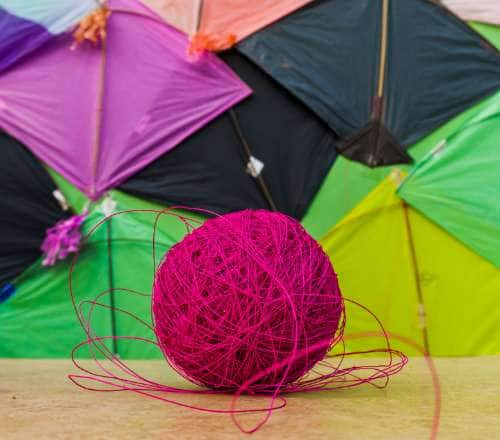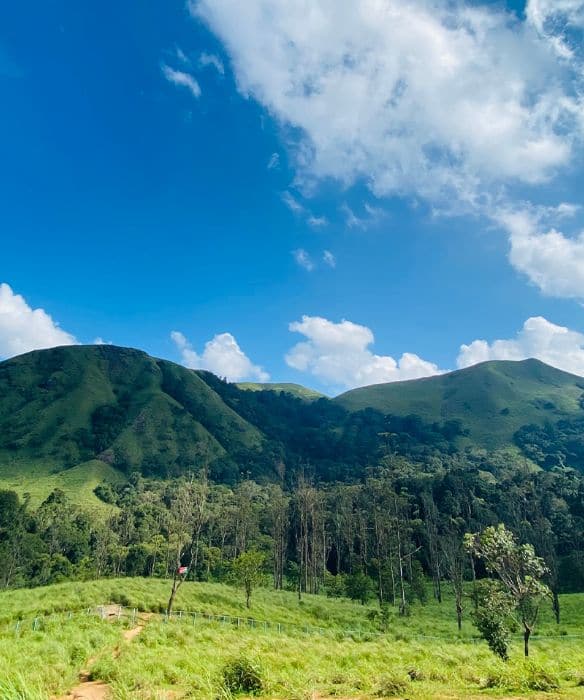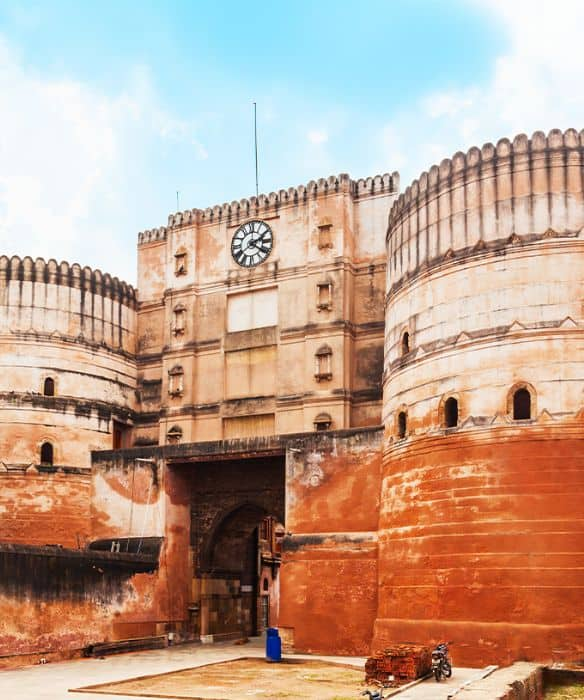Stay logged in to proceed with bookings, orders and offers.
On changing the terminal, you will loose items in your cart. Are you sure you want to change your terminal?
Bring a piece of Karnataka home with you – here are our top recommendations for mementoes from the great southern state.
Whether you're interested in culture, history, cuisines, or art, you are certain to have some special experiences in Karnataka. From vast coffee plantations to sun-kissed beaches, from famous monuments to exquisite art forms, this state has a gift for everyone. So when you tour Karnataka, of course, you'll want to shop for souvenirs that will keep these memories alive.
Mysore silk, Udupi metalwork, sandalwood, ivory carvings, classical paintings, roasted coffee beans – you'll find an incredible variety of hand-crafted goods unique to this region. So if you're wondering what keepsakes to buy for your loved ones (and, let's be honest, yourself), you've come to the right place. Here is our curated list of iconic souvenirs you can take home from Karnataka.
Read More
Read Less
While on your visit to Karnataka, head to Channapattana – a town in Ramanagara renowned for manufacturing wooden toys and dolls. Owing to its global popularity, Channapatta is also called Gombegala Ooru (Toy Town) in the local vernacular. Here, toys are painted with vegetable dyes to ensure that they remain harmless to children. Traditionally, these handicrafts take the shapes of whimsical carts, animals, and dancers.
Navalgund durries are traditional rugs, often repurposed as prayer mats. Manufactured in the town of Navalgund, the art of making Navalgund durries was inherited from the weavers of Bijapur. These woven Indian rugs are famed for their chequered and block-like patterns. Made out of fine cotton yarn, animal motifs of the crane and the peacock frequently appear in these art pieces.
Chittara folk art is a traditional form of painting done by the women of Deewaru – a matriarchal community of nature worshippers. These paintings are typically 2-3 feet wide and use eco-friendly materials like rice paste and Gurige seeds as alternatives for artificial paint. The Deewaru community uses this particular medium of art in rituals and to mark celebrations in life.
Bidri work is a form of metal handicraft. Dating back to ancient Persia, Bidriware making has been in practice from the 15th century onwards. The Bahamani Sultans of Bidar provided patronage for this art during their reign. Influenced by Persian styles, Bidri work goes through eight rigorous stages of processing – moulding, engraving, designing, and silver inlaying, among others. Images of poppy plants and flowers feature frequently in Bidri work, which is characterised by its black backgrounds.
The souvenirs you'll find in Karnataka are admired the world over for their beauty and utility. These meticulously hand-crafted objects represent the commitment, patience, skill and effort of the state's traditional artisans. So by gifting a souvenir to someone (or yourself), you are doing something more than merely transferring the ownership of an object – you're helping keep Karnataka's heritage alive. So bring a piece of Karnataka back home in the form of your souvenirs!
Famed for its aromatic sandalwood oil and soap, Mysore is one of the world's largest producers of sandalwood. The soothing sandalwood oil is first distilled from the wood and then used as one of the main ingredients in sandal soaps. These soaps now go by the name ‘Mysore Sandal Soap’. When you visit Mysore, you can stop by the Karnataka Soaps and Detergents factory where these aromatic soaps are manufactured. This factory is located just 4 km. away from Mysore. With their rich, balsamic fragrance, these soaps will make perfect gifts for your loved ones.
If you're fond of sarees, look no further than Mysore for your souvenirs. Home to a 250-year-old tradition of sericulture, Mysore produces gorgeous single-colour silks, each piece utterly unique. The sarees produced this way are known for their minimalist grace and delicate texture. With the range of rich patterns on offer, you'll find the perfect saree for any formal occasion.
Mysore Pak is one of those delicacies that your taste buds can’t get enough of. Available in rectangular and square shapes, this delicious sweet is made of gram flour, sugar syrup, and ghee. The quantity of ghee used in its preparation determines the texture of Mysore Pak. There are two variants of Mysore Pak available in the market— the grittier version and the creamier one.
Legend has it that Mysore Pak was accidentally conceived in the imperial kitchens of Maharaja Krishnaraja Wodeyaar. One fine afternoon, Kaksura Madappa, the chief cook, was instructed to come up with a new post-meal dessert. Pressed for time, he made a sweet syrup. By the time the Maharaja finished his lunch, the syrup had solidified and taken on a fudge-like form. And thus was born the legendary Mysore Pak!
Popularised by Mughal rulers, Ganjifa is a card game played by the elites of medieval India. ‘Ganjifeh’ in Persian roughly translates to ‘Playing Cards'. Circular in shape, Ganjifa cards were hand-made and known to depict symbols from Hindu mythology. Themes such as the Dashavatara, Navagraha, Pancha Pandava, and Naveen Ramayana are some recurring ideas in the iconography of Ganjifa cards. You can purchase these cards at the Cauvery Handicrafts Emporium in Karnataka.
It was under the Wadiyar dynasty’s patronage that the Mysore school of painting reached its zenith. Common themes depicted in Mysore Paintings include gods, goddesses, and scenes from Hindu mythology. Raw materials like board, brushes, paints, and gold foil used in this art form were hand-made by artists. Another fascinating aspect of these paintings is that vegetable dyes were used as paint instead of watercolours. An art enthusiast would easily notice that tertiary colours like mauve, jade, amber, ochre and crimson dominate the canvas in a Mysore painting, as opposed to primary and secondary colours.
Similar to Mysore paintings, rosewood inlay drawings are also themed around royalty and Hindu deities. Mysore used to be known for displaying magnificent inlay work that is emblazoned on furniture like console tables, coffee tables, and sofa sets. To call this inlay work 'beautiful' is an understatement. Rich in pastoral imagery drawn from popular myths, these pieces can momentarily transport you in time.
Located 120 km. south of Mysore, sprawling coffee plantations welcome you in Coorg. Both Robusta and Arabica varieties of coffee are grown here. If you are lucky, you may even get a chance to try Civet coffee! Some of the popular coffee plantations of Coorg are Karagunda Coffee Plantation, Farm House Coffee Estate, and Palace Estate. Additionally, you can buy items such as coffee, pepper, oranges, cardamom, homemade chocolates, homemade wine, honey, and more.
If you enjoy traditional music, do visit Karnataka during the Hampi festival – a three-day carnival that happens either in October or November. The constituents of Carnatic music are Raga (melody type) and Tala (cyclic rhythmic pattern). While these are common to Hindustani music as well, the idea that instrumental music should complement the vocalist than vice-versa sets Carnatic music apart from the former in a major way. You can take home recordings of performances as memorabilia.





The Adani One expressly disclaims all liability, direct and indirect, in respect to actions taken or not taken based on any or all the contents of this Blog. The Blog is an opinion of the contributor based on the collation of data from various sources and is provided only for information purpose. Adani One does not canvass, advertise, solicit, invite or induct for any product, merchandise, information, brand or any other materials mentioned in the Blog, nor does it obtain any monetary benefit from the same. Reader is advised to read and apply his/her intellect and discretion in this regard. Any Intellectual Property mentioned in this blog belongs to the rightful owner. We do not intent to claim any interest over the same.